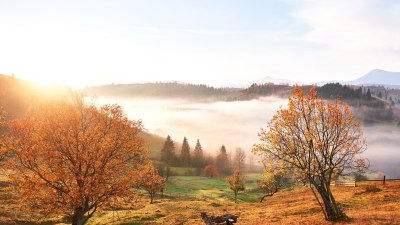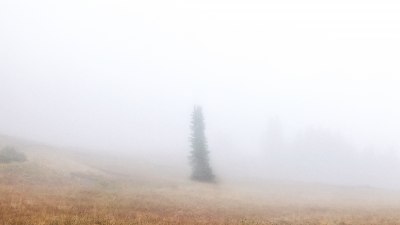Why Some Storms Appear Purple
Explore the science behind why certain storms exhibit purple hues.

Storms can often evoke a sense of awe and fear, but one striking phenomenon is when these weather events take on a purple hue. This captivating visual effect can be observed in various storm conditions, especially thunderstorms, and understanding the reasons behind it involves delving into the interplay of light, moisture, and atmospheric conditions.
To grasp why some storms appear purple, we must first consider the basic principles of light and color. Light, as we know, is composed of different wavelengths, with each wavelength corresponding to a specific color visible to the human eye. When sunlight passes through the atmosphere, it scatters in various directions, creating different colors based on the angle of the sun and the particles present in the air.
One of the primary reasons storms can appear purple is due to the presence of dust, pollution, or other particulates in the atmosphere. These particles can scatter sunlight differently, leading to unique color perceptions. During storms, especially severe thunderstorms, there are often many suspended particles present, which can amplify the scattering effect.
The Role of Moisture
Moisture is another crucial factor contributing to the purple appearance of storms. Storms often bring with them high levels of moisture, which can create a dark and foreboding sky as clouds fill with water. When light interacts with these water droplets, it can enhance the scattering effect even further. The combination of heavy cloud cover, moisture, and the scattering of light can produce spectacular colors, including shades of purple.
Lighting Conditions
The time of day when a storm occurs can greatly influence its appearance. Storms that occur during sunset or sunrise are particularly prone to displaying purple hues. The low angle of the sun during these times means that the light must pass through more of the Earth's atmosphere, allowing for increased scattering and a more vivid color palette. As the sun sets, the longer wavelengths of light create vibrant oranges and reds, while shorter wavelengths can take on blue and purple tones. This phenomenon can create an almost surreal visual that can leave observers awestruck.
Additionally, the structure of the clouds themselves plays a significant role. For example, thunderstorm clouds, known as cumulonimbus clouds, can tower up to 40,000 feet into the atmosphere. As these clouds grow taller, they can trap and reflect light, enhancing the purple hues seen from below. When storms are particularly intense, they can create an almost theatrical effect against the backdrop of a dark sky, resulting in those eye-catching purple shades.
Weather Radar and Color Interpretation
In the realm of meteorology, color is not just a visual phenomenon but is also used as an important tool for understanding storm intensity and structure. Doppler radar technology is often employed by meteorologists to visualize storm patterns and behaviors. The radar data can be translated into colors that represent different rainfall rates, wind speeds, and storm types. Interestingly, the colors used on weather radar, including purples, can signify heavy rainfall or significant storm intensity. Purple, in this context, often indicates extremely heavy precipitation, potentially indicating hail or severe thunderstorms, contributing to the perception of a purple-colored storm.
Psychological Effects
The human perception of color can also influence how we interpret storms. Colors evoke different emotions and reactions, and purple, in particular, is often associated with mystery, intrigue, and power. When a storm exhibits purple hues, it can create an intensified emotional response, often heightening the drama and perceived severity of the event. This psychological effect can affect how people prepare for and respond to storms.
Scientific Explanation Behind Purple Storms
While we comprehend the aspects of light scattering and atmospheric particles, it’s essential to appreciate the scientific concepts that underlie these phenomena. Storm clouds consist of various types of water droplets and ice crystals that interact with light in complex ways. When sunlight encounters these droplets, refraction and reflection occur, splitting the light spectrum. If the storm is positioned correctly regarding the sun's position and the atmosphere's moisture content, this can lead to stunning purple displays.
Climate Change and Purple Storms
As global temperatures rise due to climate change, weather patterns are becoming increasingly unpredictable. This has implications for storm behavior and intensity, which can influence how often purple storms may appear. Warmer air can hold more moisture, potentially leading to more intense storms and greater likelihood of dramatic color displays. Additionally, increasing urban pollution can add more particulates to the atmosphere, which could further affect how light interacts with storm clouds.
In more urban areas, the interaction of artificial light with natural storm phenomena may also contribute to the colors we observe. City lights can illuminate storm clouds, creating effects that blend with the natural colors, including purples. This blending of natural and artificial light adds another layer to why we see certain colors during storms.
As we study the atmosphere and climate more thoroughly, meteorologists will likely gain a better understanding of how the appearance of storms will evolve. The inquiry into why storms exhibit purple hues is just one piece of a broader puzzle. As we gain insights into storm mechanisms and color perception, we can appreciate not just the beauty of storms but also their power and unpredictability.











